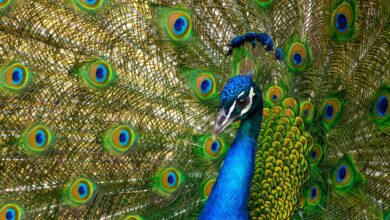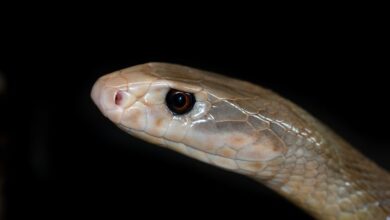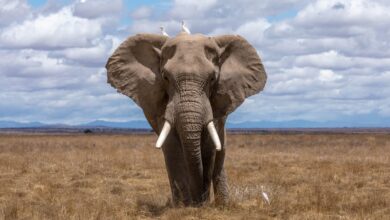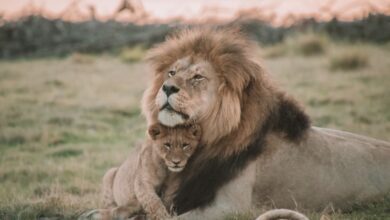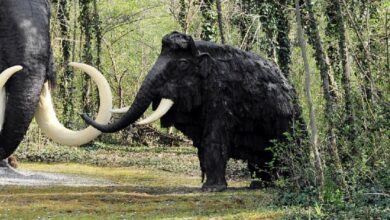The Domestic Cat
The Domestic Cat has been a popular family pet for approximately 9,500 years. Farmers initially used it to keep rodents away from their crops and other livestock. Some believe that today’s Domestic Cat is a distant relative of the North African Felis lybica. In contrast, others believe they are a separate subspecies from the Ancytharian Sea that was domesticated later by humans.
There are over thirty different breeds of domestic cats, all of which are thought to have descended from the African Wildcat. Domestication is believed to have begun more than 4000 years ago in Egypt, initially for religious reasons.
Domestic Cat Size and Appearance
The domestic cat comes in many colors and coat lengths, making it nearly impossible to describe. There are longhaired breeds, such as the Persian, and cats with almost no hair, such as the Mexican hairless. There are even cats with no tail, such as the Manx cat, or very short legs, such as the Munchkin. Domestic cats come in various sizes, ranging from 5 pounds to more than 20 pounds.
Domestic Cat Reproduction
Mating can occur at any time of year for domestic cats. Females will give birth approximately 60-67 days after mating. A typical female can have up to three kitten litters per year. The litter can contain up to 5 kittens. Around six weeks of age, the young are weaned.
A domestic cat’s lifespan can vary greatly. Due to injuries or disease, some of them only live a few years. Those with loving owners who care for them can easily live for 15 years. On the other hand, the genetic profile of a cat frequently determines the quality of life. Many are prone to ailments such as arthritis, loss of sight, or loss of hearing.
Domestic Cat Diet and Feeding Habits
It is the only member of the feline family that does not depend exclusively on meat obtained through hunting. Many domestic cat owners have discovered them effective at capturing mice or birds. Many people keep their beloved cats around to help reduce the possibility of them experiencing rodent problems.
A cat’s diet can vary significantly. Many of the foods available contain some form of meat. There are a variety of wet and dry cat foods available. Owners frequently discover that they must try various foods before finding one their cat will enjoy. They can be very picky, turning up their noses and refusing to touch anything they don’t like.
Domestic Cat Behavior
The Domestic Cat is far more capable of cognitive performance than they admit. They may appear to be dozing off for the day, but they are closely monitoring everything. They can be taught to respond to their name and play some simple games with careful training, but it is more likely that the culmination of all their cautious observation will be learning how to train you. Domestic cats are also organic hunters, making them an excellent way to keep mice and other vermin at bay. They are also very affectionate and make perfect lap warmers.
Many believe that the domestic cat lives the life we all desire. Most domestic cats are self-sufficient and spend a lot of time relaxing in the sun or napping. They are very playful as kittens, but that need seems to fade as they grow older. They frequently purr, which their owners interpret as indicating that they are very relaxed.
Domestic Cat Habitat and Distribution
The domestic cat can live pretty much anywhere. They thrive in a variety of climates. Some are indoor cats, while others live outside. These animals are free to roam and explore. Many owners permit them to come in and out in their free time.
However, not every domestic cat has a home. There is a concern with many of them roaming freely in many communities. They scavenge for food and look for places to sleep. The risk of disease is extremely high in such populations, which is why many are concerned.
Domestic Cat Hunting Strategies and Techniques
Many felines hunt their prey using the “stalk and pounce” technique. When these cats find their prey, they bend closer to the ground and slowly creep toward it. When the cat is within striking distance of the prey, it will leap forward. Other cats would instead ambush their prey.
Domestic cats have not been selectively bred in the same way that dogs have. As a result, they retain their hard-wired hunting behavior from their ancestors. Hunting is an instinct for a cat, just like eating and sleeping.
The desire to hunt is unrelated to hunger. Cats in the wild hunt constantly, even when they are not hungry, since they never know when their next meal will arrive. If a cat waited until it was starving to hunt, it might be too weak to catch prey.
